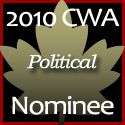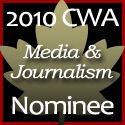 A CULTURE OF DEFIANCE: History of the Reform-Conservative Party of Canada
A CULTURE OF DEFIANCE: History of the Reform-Conservative Party of Canada"Less than 47 per cent of the people in Canada today are of British descent. Then do you wonder why the Klan has been called into being?" Saskatchewan Klan leader R.H. Hawkins 1928
"What, one wonders, would have been the result of the 1968 federal election if Trudeau had told the country that he would change the immigration picture completely, make untraditional immigration dominant, and bring in at least 650,000 colored immigrants in ten years—" Founding Reform Party member Doug Collins 1979
"Not in Canada, we say. Canada is different. But is it?... The Klan has been bringing its message of hate to Canadians. . . they can't be ignored." James Fleming, federal minister of state for multiculturalism 1982
The Ku Klux Klan had enjoyed a bit of prominence in the depression years, blaming immigrants and Catholics for the woes of Canadians, but they had pretty much fizzled out as most hate groups focused on anti-Semitism to vent their anger.
Even in the United States, they were dormant until the Civil Rights Movement, when they began to organize, gaining strength. But what made them even more powerful, was when they teamed up with the anti-Semites.
And it was at this time that a resurgence began in Canada, in opposition to new immigration policies.The KKK had faced opposition in every period of its existence, from anti-slavery abolitionists in the nineteenth century to labor unions in the 1930s and the massive civil rights marches of the 1960s. What distinguished the anti-Klan movement of the late 1970s was a greater organizational cohesion. In August, 1979, in response to the resurgence of Klan violence and particularly the Klan attack on peaceful marchers in Decatur, Alabama, the Southern Christian Leadership Conference called a meeting of more than 30 organizations, and the National Anti-Klan Network was established.
The network was designed to help various church, community, labor and political groups co-ordinate their activities and pool their resources in countering the Klan. In 1979 as well, the Southern Poverty Law Center, a civil rights group located in Montgomery, Alabama, began its Klanwatch project. Klanwatch was set up to identify and keep track of Klan members and Nazis across the U.S., recording their involvement in crime and violence, and regularly disseminating this information to the media, law enforcement agencies and politicians. Klanwatch's legal division won a permanent injunction in Texas against Klan harassment of Vietnamese fishermen, a favorite new target of the KKK. Klanwatch also won a major legal victory in that state when a federal judge banned Klan paramilitary activity there.
One of Klanwatch's fundraising letters was written by Maria von Trapp, whose flight from Nazism was made famous by the film The Sound of Music. She drew the connection between the resurgence of the Klan and fascism: "It is happening here, right now. The Ku Klux Klan and their brothers in hate, the American neo-Nazis, are growing in strength and belligerence across the country. Klansmen in their robes may look ridiculous, but the threat they pose is deadly serious. Hitler started out with just a handful of followers. Today, the Klan boasts thousands of members. (1)
While David Duke and other U.S. Klan leaders were mustering their troops for battle, plans were also brewing among their ideological breathren to the north. In Canada, the Ku Klux Klan — and for that matter similar groups on the extreme right — had been largely dormant for three decades. What provided the bridge of continuity was the fascist movement. Just as many Klan members of the 1920s probably went on to become Canada's fascists of the depression years, so too did a good number of the Nazis who emerged in Toronto in the late 1960s and 1970s lay the groundwork for the rebirth of the Klan in that city. (1)But what gave the movement strength, was that many of their actions had become legitimized by mainstream right-wing organizations, politicians, and even some churches.
...."Canadian Klan leader Alexander McQuirter, who attended the ceremony, was asked about the Klan's claim to have attracted a 'new breed' of recruit - businessmen instead of workers. He said 'the (people who wear) ties type' are the new Klan majority, but they want to protect their jobs, so they just provide money and other backroom assistance . . ." (2)And as these groups became attracted to the Reform Party's stance on immigration, they would not only infiltrate the party, but also provide security and a few even shaped policy.
Sources:
1. White Hoods, By Julian Sher, New Star Books, 1983, ISBN 0-919573-13-4, Pg. 74-75
2. DEBATES OF THE LEGISLATIVE ASSEMBLY, Hansard, JUNE 23, 1981



No comments:
Post a Comment